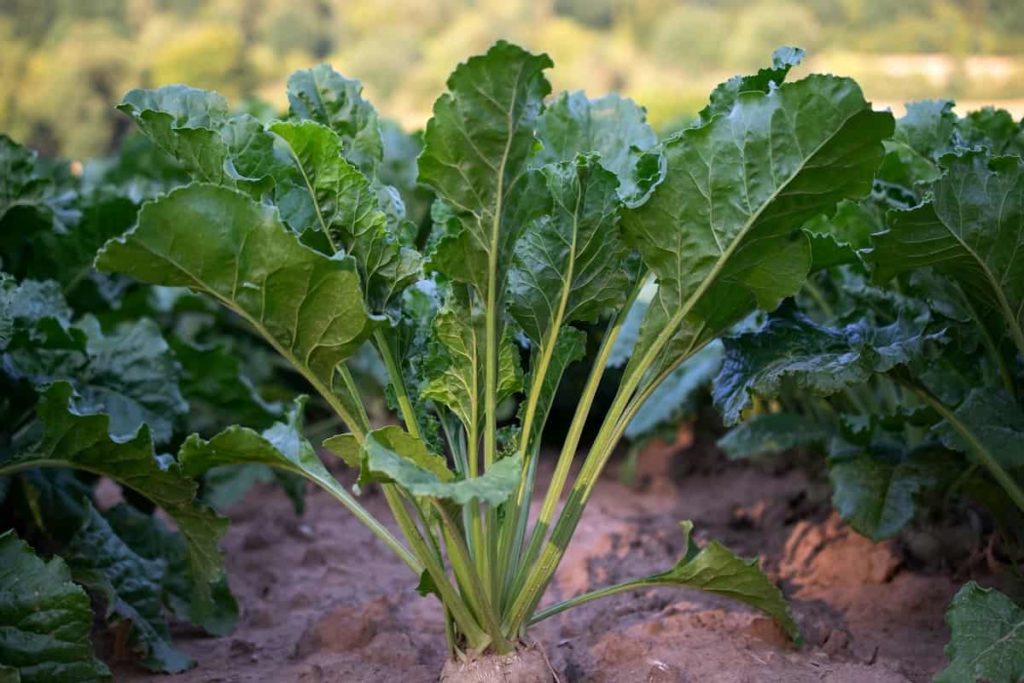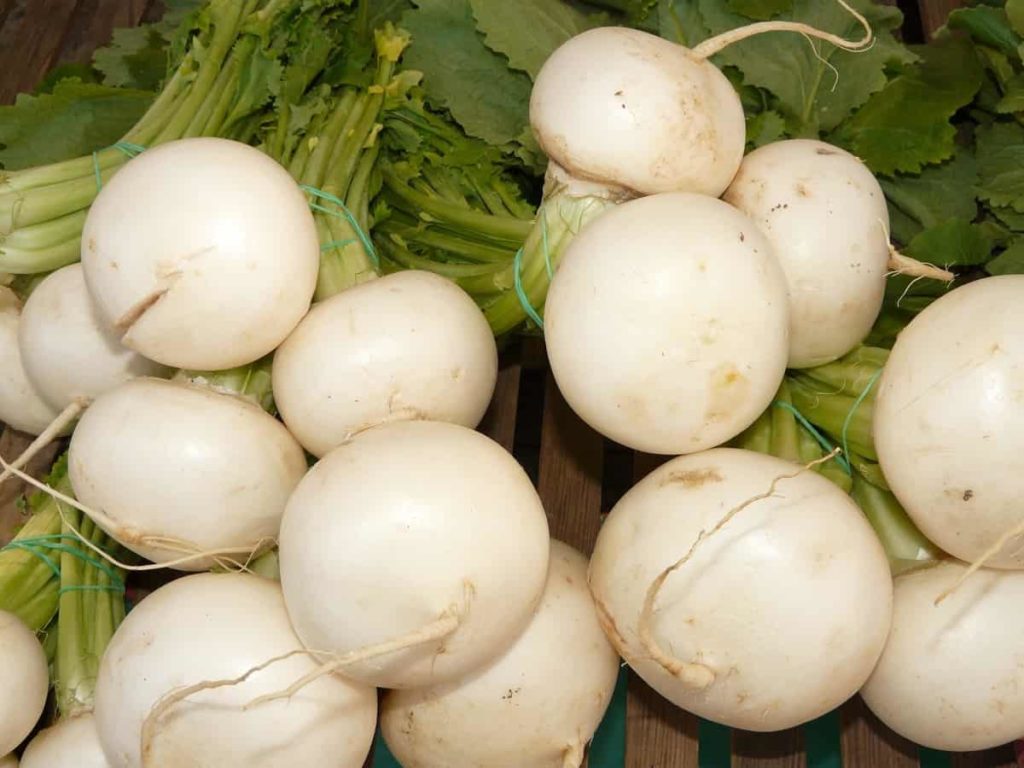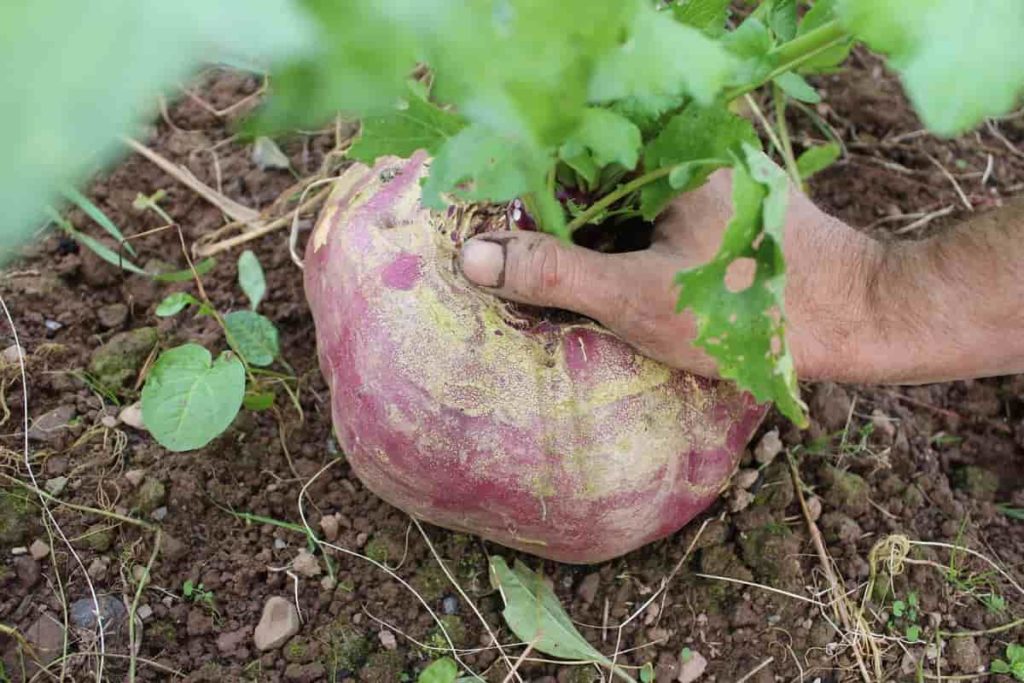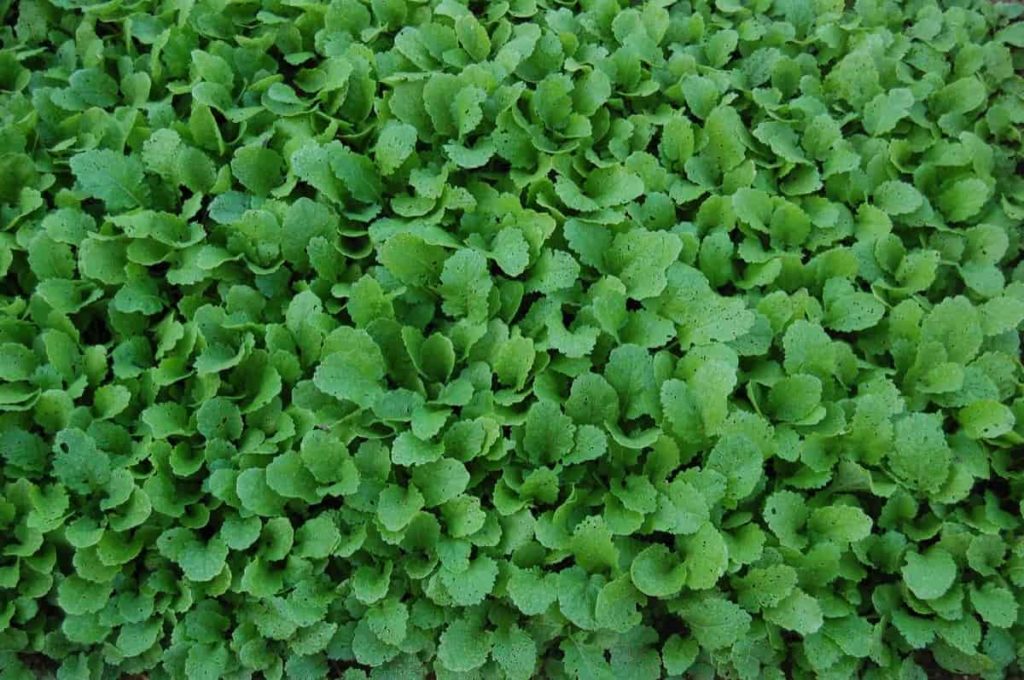Hello friends, are you planning to grow Turnips in your garden and looking for information on different kinds of fertilizers and the best fertilizer for Turnips, Well, you are in right place. Here, we are going to discuss different fertilizers for turnip plants in your home garden or outdoor along with information on when and how to fertilize turnips. Whether you grow Turnips for their juicy roots, love them for their delicious greens, or just like to eat the whole plant from the root to shoot, there are many fertilizers you can use to get a plentiful crop of Turnips.

Turnips need fertilizers for growth. Organic materials, such as manure and compost, and inorganic materials, such as chemicals, can be used to fertilize plants. The use of both types of materials usually provides excellent growth. Nitrogen is an important nutrient of plants, primarily responsible for the growth of stems and leaves. Without any nitrogen, your Turnips won’t be able to grow enough leaves to support large root growth.
On the other hand, too much nitrogen will make your Turnip thrive with delicious greens at the cost of having small, fibrous Turnip roots. When growing Turnips, you should choose a low ratio of nitrogen (N) to phosphorus (P) and potassium (K). Nitrogen is important for leaf and stems growth, but you don’t want too much when the Turnips grow otherwise, they would prefer to grow lots of leafy greens but small roots.
Phosphorus and to lesser extent potassium are important for healthy root development. In addition, any vegetable fertilizer will contain nutrients that need to thrive. Turnip benefits from early nitrogen after sprouting, but in the growing season continuously more nitrogen fertilization will boost the growth of more Turnips greens rather than growing larger roots.
Best fertilizer for Turnips
Homemade fertilizers for Turnips
Wood ash
Wood ash is full of nutrients that plants need, such as potassium and phosphorus, adding wood ashes to the soil before planting helps increase potassium and phosphorus levels.
Lime
Turnips grow best in slightly acidic soils, with a pH between 6.0 and 6.5. If required, you can raise the pH of your soil by incorporating lime into the soil.
In case you miss this: Growing Turnips in Containers, Turnips Plant Care

Epsom salt
Epsom salt, when applied to relieve magnesium deficiency, increases the flavor, quality, and quantity of Turnips.
Coffee grounds
Coffee grounds make great fertilizer as they contain many important nutrients needed for plant growth. Coffee grounds can also attract insects and reduce the concentration of heavy metals in the soil.
Organic fertilizers for Turnips
Bone meal
Turnips also prefer soils rich in potassium and phosphorus, but not in nitrogen. If soil testing reveals that your garden needs additional phosphorus, you can add bone meal as a side dressing.
Kelp meal
If your soil needs additional potassium, you can also apply a kelp meal and fish emulsion fertilizer or granite meal.
In case you miss this: Best Fertilizer for Radish: Homemade, Organic, NPK, Liquid, Natural, and Compost Manure

Blood meal
Blood and bone meals are great fertilizers. It contains good amounts of nitrogen, phosphorus, and calcium. Phosphorus is important because it helps the plant develop good Turnips.
Compost manure for Turnips
Compost
Before and after planting, enrich your soil with nutritious fertilizer to produce the largest, testiest Turnips in your home garden. Cover 100 square feet of soil with the organic matter with 2 to 4 inches of fertilizer. These materials should work in the soil several weeks before planting so that they can be allowed to dissolve.
Fertilizer sown with straw or similar material should be applied with commercial nitrogen fertilizer. Generally, if the soil has been properly modified with manures or compost, or other organic materials, only nutrients are needed nitrogen, if anything.
Manure
Turnips are a very fast-growing crop and thrive in soils that are well-drained, rich, and fertile, preferably one that was dug with manure for last year’s crop.
Natural fertilizers for Turnips
Apply organic mulch around plants during summer when temperatures rise. Mulch will cool the soil and reduce water pressure. Organic mulches include grass clippings, leaves, straws, and newspapers. They also help in controlling weeds.
Liquid fertilizers for Turnips
Fish emulsion
Turnip gives a good response to organic fertilizers such as compost tea, blood and bone meal, and fish emulsion. If growing for greens, high nitrogen fertilizer will help produce deep, healthy green. A fertilizer that has high potassium will be better for the roots of the Turnip.
Compost tea
For good root development, feed Turnip plants with fertilizers that include potassium and phosphorus, such as compost tea.
In case you miss this: Best Fertilizer for Parsley: Organic, Homemade, Liquid, NPK, and Compost Manure

Commercial fertilizers for Turnips
NPK ratio
Although nitrogen is essential for rich plant growth, an extra stimulates leaf growth at the expense of roots and flowers. When using commercial fertilizers, root vegetables are generally fertilized with 1/4 to 1/2 cup nitrogen, or 680 grams of 5-10-10 fertilizer per 100 square feet when seeding. Fertilizing with 5-10-10 fertilizer offers a low amount of nitrogen required for root crops while supporting root and stem growth. Due to their rapid growth, Turnips do not require side dressing of fertilizer.
If the soil is not organic, apply 480 grams of 10-10-10 fertilizer to every 10 feet of a row during the growing season. If you continue to use 10-10-10 and similar fertilizers, phosphorus can be formed in the soil. High amounts of phosphorus can run away from soil in rain or irrigation water and pollute lakes and canals. Get your soil tested. If it does not require extra phosphorus, apply 1 cup of calcium nitrate or nitrate of soda per 100 square feet of Turnip plants.
Some of the commercial nitrogen fertilizers available are urea, ammonium sulfate, calcium nitrate, and ammonium nitrate. A slight decrease in boron can cause colorless brown tissue in the interior of the Turnip roots. If your Turnips have these symptoms and your irrigation water has frequent rain or low levels of boron, check your soil to see if you need to add boron. Soil testing can also show the level of salt in the soil. Moderate levels of salt can reduce your vegetation production by up to 50 percent.
Turnip fertilizer schedule
Although strictly not necessary, the monthly application of light, organic fertilizer can help strengthen the root of Turnip. Choose more fertilizer in potassium and phosphorus instead of high nitrogen content. Nitrogen fertilizers will make Turnip green very bushy, but this will result in damage to roots. Look for fertilizers that also contain boron or else apply a separate boron spray four to six weeks after sowing the seeds. Instead of fertilizer, you can apply compost tea food once a month.
In case you miss this: Best Fertilizer for Collard Greens: Homemade, Organic, NPK, Natural, Liquid, and Compost Manure

Fertilizers such as fish, blood, and bone fertilizer can be used for best results a week before or after sowing for the common purpose. Add a balanced and slow-release fertilizer when planting. You can use the dung for Turnips and get good results. You can broadcast fertilizer on the planting bed before sowing the Turnip, but if you are amending with compost, fertilizer should be unnecessary at this stage.
Avoid using too much nitrogen fertilizer ever if you are growing Turnips for roots. If you only plan to harvest greens and not roots, you can confidently use nitrogen-rich liquid organic fertilizers such as fish emulsion. Always follow the manufacturer’s instructions. More fertilizer is not better equal and can be much more harmful.
How to fertilize Turnips in pots
Turnip plants will need fertilizer to help grow large and healthy Turnip. If you can manage to get compost, add it to the potting soil when preparing the container. Compost contains nutrients and beneficial microorganisms that will help enrich potting soils. If you don’t have compost, you can add balanced organic fertilizer to the potting soil when preparing the container.
You can choose and mix slow-release granular fertilizer. You can use any balanced fertilizers such as 5-5-5 or 10-10-10. Be sure to follow the manufacturer’s instructions when adding to the soil. When you water it, the slowly released fertilizer will be released into the soil and help the nutrients reach the roots of the plant. This type of fertilizer will be available in potting soil for about a month.
You can then continue to add fertilizer every month. Or you can consider the use of liquid organic fertilizer that instantly promotes potting soil as well as leaves to nutrients. You will need to spray such fertilizer once every two weeks. Be sure to follow the manufacturer’s instructions on how much you need to dilute liquid fertilizer with water before use.
Frequently asked questions about fertilizers for Turnips (FAQ)
Why are my Turnips not growing?
Soil too rich in nitrogen tends to give Turnips an abundance of leaves, but there is an undeveloped root. This could have happened if you had used very nitrogen-rich fertilizer or fresh manure or compost heavily.
In case you miss this: Best Fertilizer for Artichoke: Homemade, Organic, Liquid, NPK, and Compost Manure

Why are my Turnip leaves turning yellow?
Turnips and related vegetables are deficient in manganese. This type of deficiency is indicated by the normal yellowing of leaves which is first reflected in the middle of the growing season.
What causes brown spots in the Turnips?
Turnips are affected by the lack of boron. Brown heart can be found in Turnip, where there are strong, water-soaked spots on the flesh. Tissue can eventually become brown pulp and hollow.
- How to Grow Tomatoes Organically at Home: A Comprehensive Guide
- Organic Gardening on a Budget: Low-Cost Methods and Materials
- Gongura Seed Germination and Planting Methods
- Cabbage Seed Germination and Selection
- Broccoli Seed Germination and Selection
- Asparagus Seed Germination and Variety Selection
- Seasonal Flower Gardening: Best Practices for Spring, Summer, Fall, and Winter
- How to Grow Hibiscus from Flower
- Plantation Ideas for Home Decoration: A Beginners Guide
- Flower Garden Designs and Layouts for Beginners
- Planting and Spacing Techniques in Papaya: A Beginner’s Guide
- Growing Gold: Essential Techniques for Planting Pineapples
- How to Make Kalanchoe Plant Bushy: Home Remedies and Solutions
- 11 Reasons Why Your Gardenia is Not Blooming: Home Remedies and Solutions
- Eco Elegance: The Guide to Designing a Drought-Tolerant Landscape
- Gardening on a Slope: Strategies for Hillside Landscaping
- Nourish and Flourish: Top Organic Mulches for Thriving House Plants
- Everything You Want to Know about Indian Mogra Flower: Discover Uses and Growing
- Green Thumb Success: Expert Tips for Cultivating Greenhouse Pumpkins All Year Round
- Maximize Growth & Flavor: The Ultimate Guide to Companion Planting in Herb Gardens
- How to Control Rhododendron Problems Naturally: Home Remedies and Organic Ways to Fix Them
- Natural Magic: The Remarkable Benefits of Cinnamon for Plants
- Best Steps to Revive Dying Tulip with Natural and Organic Treatment
- 10 Reasons Why Your Angel Trumpet is Not Blooming: Remedies and Treatment
- How to Fix Periwinkle Leaf and Flower-Related Problems: Natural Remedies and Solutions
- How to Fix Zinnias Leaf and Flower Problems: Discover Natural and Home Remedies
- Organic Steps to Induce Lemon Tree Flowers: A Comprehensive Guide
- Bloom Booster: Crafting the Perfect Homemade Bougainvillea Fertilizer
- Optimizing Growth: A Guide to Applying NPK Fertilizer for Potted Plants
- 10 Best Homemade Fertilizers for Rubber Plant: DIY Recipes and Application Method
- How to Boost Female Pumpkin Flowers: Effective Steps for More Flowers and High Yields
- Transform Your Indoor Garden: Top Benefits of Pink Salt for Houseplants
- 10 Best Homemade Fertilizers for Peacock Plants (Calathea): Easy DIY Guide
- Unlock Blooms: 9 Reasons Why Your Potted Chrysanthemum is Not Blooming
- 8 Reasons Why Your Potted Hibiscus is Not Blooming: Fix it with Simple Solutions
- Unlock Blooms: 9 Key Reasons Your Potted Frangipani Won’t Flower